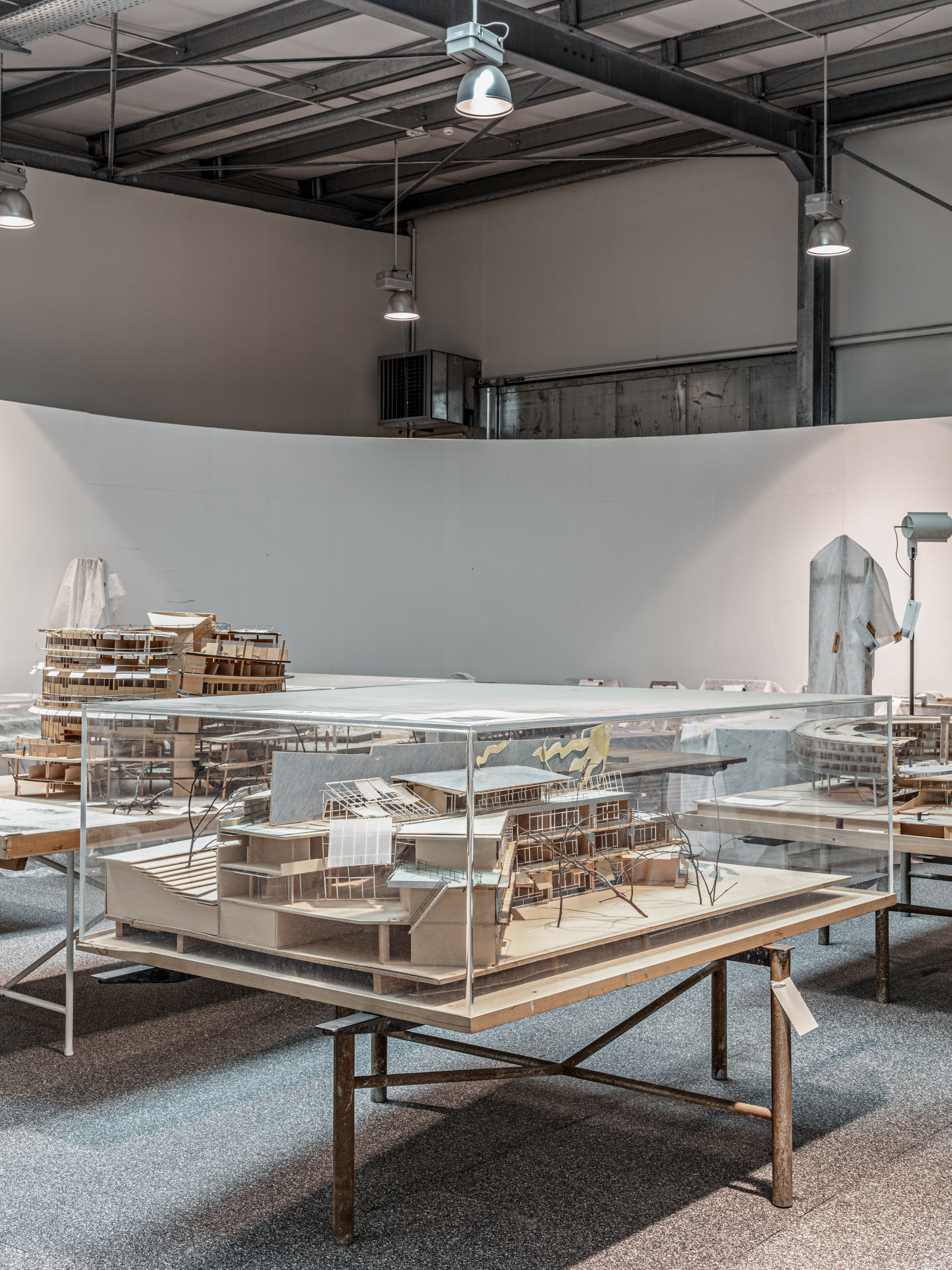About Us

The saai Archive
Since its establishment, saai has been collecting and archiving material on architecture, landscape design and engineering, as well as on architectural teaching, architectural theory and photography. The oldest documents date from around 1700, but the collection focuses on the 20th century, particularly the second half of the century, and geographically on collections from the southwest German area. Most of the holdings are of international importance and testify to the region's networks with the world. In addition to collecting and preserving cultural assets, our core task is to ensure that scientists and educators have the most open access possible to our objects, estates, documents and data. At the same time, the role of the saai as an established place of knowledge is always reflected.
The saai sees itself as a vibrant, active archive. Its holdings are continuously growing in a controlled manner to ensure that historical knowledge is preserved in its material form for future generations. It forms the historical basis for research and discourse in architecture as well as for archiving practice. With regard to current research questions, the collection and the processes of the saai must also be critically examined with regard to their historically grown composition, supplemented with missing items and diversified in their form.
This also applies to the further development of the archive on a digital level. On the one hand, this can enable improved visibility and accessibility within the framework of digital networks, thus expanding its radius of action; at the same time, metadata can be re-linked to promote cross-sections through previously biographically focused collections. On the other hand, the long-term conception and implementation of a collection concept for natively digital pre- and post-mortem estates raises questions not only for technological “solutions”, but also for the core task of an archive in general: for which future should what be findable and editable, and how? How can man and machine work together without compromising differentiated classifications? These and other questions are accompanying the expansion of the saai as a “digital archive of the future”, always supported by research projects, in order to intelligently position the KIT in the establishment of standards for digital archives.
The collection of the saai is to be understood as a cultural and scientific resource for innovative teaching and research, and is to be integrated into the teaching activities of the KIT in the long term, providing students with easy access to historical originals. The exchange with students also ensures that contemporary issues are brought to the collection and that participation in social discourse is encouraged.

Our Expertise
A multidisciplinary team is available to assist with the diverse tasks in the archive, but also to answer any questions that arise in the context of contemporary work with the collection. The management team, consisting of the co-directorship and the executive management, covers a range of topics in various fields, such as architectural theory, the history of architecture, environmental and technical history, as well as curation and science communication.
The research team also comes from the field of architecture, but complements this expertise with practical archival, media studies, and curatorial backgrounds. They work with our holdings in an interdisciplinary way – for example, in science communication, on analyses of knowledge systems and metadata, and on self-learning processes, among other things.
Our archivists, with backgrounds in architecture or art history, are specialists in the architecture of southwestern Germany and its contextualization in international architectural history. The team is strengthened by a librarian who has set up and professionally supervises the existing integrated libraries and an archive library. Essential for the preservation of the collection and for the work and research on the objects is their careful cleaning and conservational packaging and securing. Our certified conservator is responsible for the restoration, packaging, and preservation, as well as the storage and maintenance of the collection, which is a major challenge as an architectural archive in the diversity of materials and media within the collection: from paper to cardboard, wood, plaster and plastics, to concrete and from drawings and models, to tools and furniture to digital media in all their existing forms. Our student and research assistants have been providing important practical and content-related support for many years.
History of the Archive
The saai collection is based on an old stock of the architecture department of the Polytechnic School, today's KIT, which probably served teaching purposes. In addition to the supplementation of this old stock, the collection was greatly expanded in the 1970s by donations of significant and extensive estates of contemporary architects. This provided the impetus for the founding of saai, which took place in 1989 on the basis of a decision by the state government of Baden-Württemberg. Since 1989, the collection has been expanded to include materials from the 20th century, thus significantly supplementing the old holdings.
Today, the saai is home to materials on topics such as architectural theory, the history of technology and environmental history, such as early ecological building or the internationalization of architecture. The basis of the collection is formed by the approximately 300 bequests and estates from offices such as Hilde Axster-Trappmann, Behnisch & Partner, Josef Durm, Egon Eiermann, Maria Verena, as well as Reinhard Gieselmann, Rolf Gutbrod, Otto Herbert Hajek, Heinrich Hübsch, Carlfried Mutschler, Fritz Leonhardt, Friedrich Ostendorf, Frei Otto, Otto Ernst Schweizer, Myra Warhaftig and Friedrich Weinbrenner.

